Bahamas News
Grand Bahama Utility Company Limited is making steady headway towards return of potable water throughout the island after the impact of catastrophic Hurricane Dorian
Published
6 years agoon

#Freeport, GB, November 11, 2019 – Bahamas – .The Grand Bahama Utility Company Limited (GBUC) confirms steady progress towards our full return to potable water on the island of Grand Bahama. Prior to the onset of Hurricane Dorian, tap water provided to the community of Grand Bahama was below 600 ppm (salt particle content per million parts of water), which bettered by a large margin the 1,000 ppm World Health Organization (WHO) standard for consumption. In certain other jurisdictions, 1,500 ppm is considered an acceptable level.
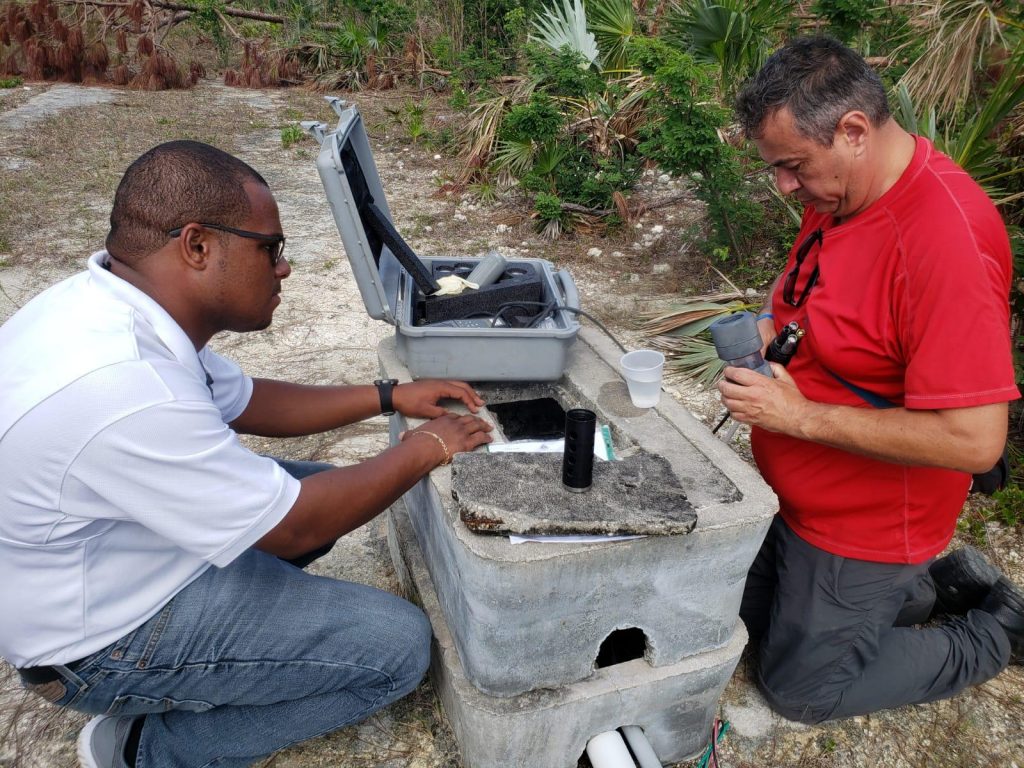
In addition to the damaged pumping stations, which were brought back on line within 5-7 days of the storm to restore the island’s running water ‘distribution’, the wrath of Hurricane Dorian compromised the island’s ‘supply’ of fresh salt-free water in Wellfields 1, 3, 6, comprising some 220 wells in total, which account for 35%, 5% and 60% (respectively) of water being supplied throughout the island. Wellfields 1 & 3 were flooded with 4 ft. of sea water, while Wellfield 6 was flooded with 21 ft. of sea water for a period of 36 hours during and after the treacherous storm. The flooding destroyed the entire vertical infrastructure including utility poles, wires, electrical components, control and motoring systems.
Utility Engineering Manager, Remington Wilchcombe said, “Once the flood water had subsided at Wellfields 1 & 6, our team immediately enacted an action plan to restore water supply. An assessment was conducted to determine the impact to the systems. One of the wells tested at 25,000 ppm, which is close to the salinity of sea water at 35,000 ppm. Results a few days later revealed that the average reading per well was 8,000 ppm in both Wellfields 1 & 3 and 9,000 ppm in Wellfield 6.”
Post assessment, mechanics were recruited to bring back-up systems into service. Once back-up systems were restored, the GBUC was able to begin rationing fresh water reserves into the system 5 days after the storm.
Simultaneously, the GBUC began working with Sanitation Services Company Limited to conduct clean-up efforts within the Wellfields. Simultaneously, Grand Bahama Power Company Limited was conducting repairs and working to regenerate the power systems at Wellfields 1 & 6. Additionally, industrial partners including the Grand Bahama Shipyard, Bahamas Industrial Technologies Ltd., Martin Marietta Aggregates – Bahama Rock, and Freeport Container Port, were all contributing resources to the restoration by providing technical service and physical support in manpower and equipment to return the plant to service.

Early September tests indicated the average salinity reading per well had improved with Wellfield 1 down to 6,000 ppm, Wellfield 3 at 2,500 ppm, and Wellfield 6 reduced to 7,000 ppm. By September 30th, the average salinity reading per well had improved with Wellfield 1 at 4,000 ppm, Wellfield 3 reduced to 2,000 ppm, and Wellfield 6 still showing the highest salinity content of 6,000 ppm.
Mr. Wilchcombe stated, “In an effort to ensure the speediest process for restoring potable water, we enlisted international services to perform a first phase Hydrological Study to provide further testing and recommendations relating to the movement, and physical and chemical composition of the water.” Water & Earth Sciences, Inc. conducted a Resistivity Test, which assesses the level of salt water existing in the water lens. The results confirmed that 99% of the Wellfields were inundated with sea water, which compromised the water quality. Further, it was determined that all of the Wellfields had varying layers of salt water, brackish water and fresh water.
A second assessment was conducted by The United Nations Educational, Scientific and Cultural Organization (UNESCO), which included the areas of Freeport City and East End. The results confirmed findings provided by Water & Earth Sciences, Inc. noting that the Wellfields had significant sea water incursion.
A third assessment was conducted by Dr. Yakov Livshitz from the Hydrological Service of Israel, which again included the areas of Freeport City and East End. First, their team visited the island to gather samples for testing to determine the porous nature of the limestone. The results were analyzed and a follow-up visit ensued. Second, a detailed assessment to locate fresh water lenses in the current Wellfields was carried out. Flow rates were tested to determine the time frame and restoration rate. Finally, a survey was conducted to find additional fresh water lenses outside of the Wellfields to extract or supply fresh water. As a result, fresh water was found in some high elevated areas. However, the capacity is not known at this time.
Geron Turnquest, General Manager of the GBUC said, “A second phase Hydrological Study must be carried out to validate and confirm the capacity of the fresh water lenses that were found for the development of new Wellfield locations. The most feasible approach, currently underway, is to bypass various higher salt content wells in Wellfield 6 with additional fresh water reserves further East, and to revive and develop Wellfield 4, which has been out of service for a number of years.”
In light of current efforts to reduce water salinity to WHO standards, the GBUC has also discussed the possibility of a Reverse Osmosis (RO) System. Mr. Turnquest added, “We have considered the possibility of introducing a large-scale Reverse Osmosis System. But we are advised that this presents challenges. Despite it being an expensive investment that will impact the cost of water to the consumer, it will also take a minimum of three to four months to develop. By this time, we aim to have resolved this salinity issue with new measures in place. An RO system on this scale would only be needed if the possibility of having no fresh water exists.” That said, smaller backup RO systems in small modular units are very likely be part of our plan to provide drinking water in the event of a future hurricane.
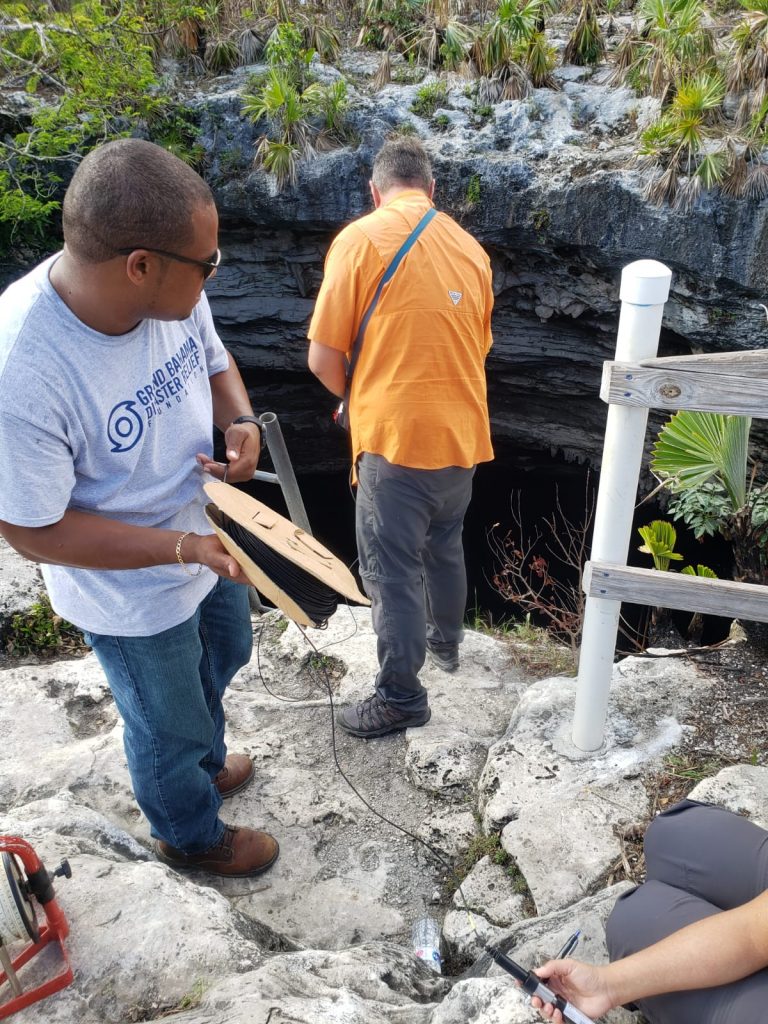
Assessments to date reveal a continuing decline in salinity levels. Wellfield 1 is now 2,400 ppm, Wellfield 3 is now ‘potable’ at 500 ppm, and Wellfield 6 is 3,600 ppm. Ian Rolle, President of the Grand Bahama Port Authority says, “The GBUC is committed to resolving the issue of salinity levels as a result of the tidal surge. The actual water pressure and the volume pumped per day is back up to pre-storm levels which is reassuring. Key infrastructure works are in progress and we continue to confer with the experts to bring about the best and speediest return to our pre-storm highest quality fresh water”.
Residents have been advised through public notices that the water can be used for sanitary purposes only and not for consumption. GBPA Chairman Sarah St George added, “We wish to emphasize that the water is clean and bacteria free. While we work to restore potable water, we have established a partnership between GBPA, GBUC, NEMA and several NGOs to provide free drinking water to local communities at water distribution sites island-wide. We are grateful to our NGO partners Isra-Aid, Samaritan’s Purse, Mercy Corps, Siemens, Resolve Marine, Water Mission, International Medical Corp, Operators without Borders, and ADRA. As salinity levels decrease naturally through rainfall and new wells come on line, we look forward to restoring a potable water supply through the island of Grand Bahama in the near future. We thank everyone in the community for their patience and understanding. We are on the right path to bringing our water back to its erstwhile pristineness.”
Release: Grand Bahama Port Authority
Photo Caption: “Dr. Yakov Livshitz Senior member of the Hydrological Service of Israel visited Grand Bahama and toured our well fields with the GB Utility Team to gauge salinity levels and the pace of aquifer recovery. His initial findings were very encouraging.” (Pictured from left: Remington Wilchcombe, Utility Engineering Manager and Dr. Yakov Livshitz)
You may like
-
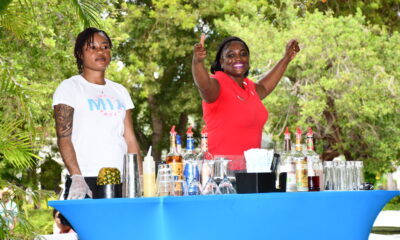

Beaches Turks & Caicos Food and Beverage Department Blends Health and Family with Smoothies
-


A Tale of Being Marginalised in One’s Own Country
-
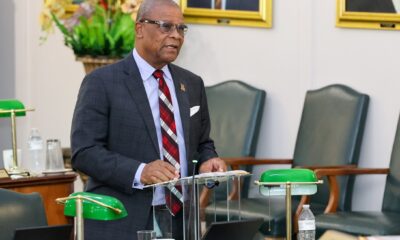

2,846 Jobs in the Pipeline; TCI with $430 Million Cash
-


Sandals Foundation and Great Shape Inc.! Produce More than 3000 Smiles in Providenciales
-
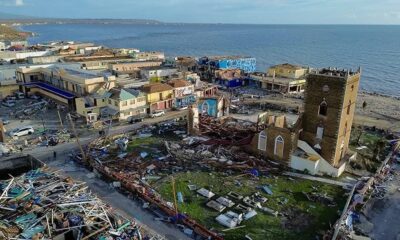

Seven Days. Seven Nations. One Storm — Hurricane Melissa
-
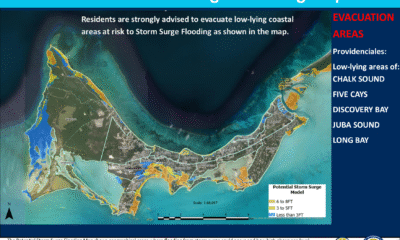

HURRICANE MELISSA: NATIONAL EXECUTIVE DIRECTIONS
Bahamas News
Walker Confirmed as U.S. Ambassador to The Bahamas: A Partner in America’s Extended Family
Published
2 months agoon
October 14, 2025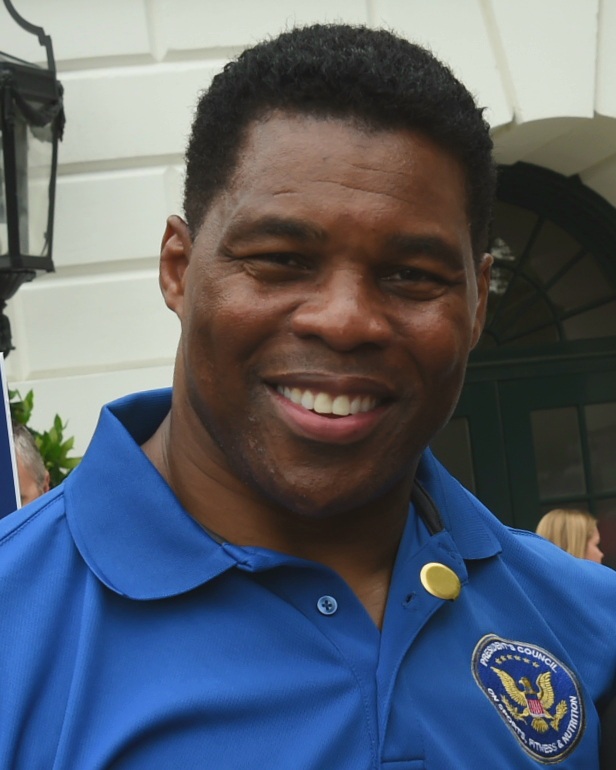
By Deandrea Hamilton | Magnetic Media
The United States and The Bahamas share more than proximity — they share a bond of history, trade, and culture that Washington’s newest diplomat calls “part of America’s extended community.”
Now, for the first time in 14 years, the U.S. Embassy in Nassau will again be led by a Senate-confirmed ambassador. Herschel Walker, the Heisman-winning football legend turned entrepreneur, has been confirmed by the U.S. Senate as America’s official envoy to The Bahamas.
Walker, who will oversee one of the Caribbean’s most strategically positioned U.S. missions, told senators during his confirmation hearing that The Bahamas will play a key role in upcoming U.S. 250th Independence celebrations. “The Bahamian people,” he said, “will be included in this milestone year, because our stories are intertwined — through family, trade, and friendship.”
While his nomination was unconventional, his priorities are anything but vague. Walker vowed to counter growing Chinese influence in the Caribbean, calling Beijing’s investments in Bahamian deep-water ports “a direct threat to U.S. national security.” He pledged to work closely with Bahamian authorities to ensure American interests remain the region’s cornerstone.
“There’s a rise in drug smuggling in The Bahamas, and this is a real danger to the United States,” Walker said, referring to the Operation Bahamas, Turks and Caicos (OPBAT) partnership. He promised to strengthen intelligence sharing, joint patrols, and law enforcement coordination to disrupt trafficking routes that have grown increasingly sophisticated.
But Walker also emphasized opportunity over fear — signaling that his ambassadorship will not only focus on security, but on strengthening The Bahamas as a gateway for U.S. investment, trade, and tourism.
“I will advise the American business community of the vast investment opportunities that exist in The Bahamas,” he said. “And I will make sure the Bahamian government maintains an environment where U.S. companies can invest confidently — because America must prove it is still great as an investor.”
For a small island nation sitting less than 50 miles off the coast of Florida, this renewed diplomatic attention carries weight. Since 2011, the post of U.S. ambassador had remained vacant — a gap that many observers say weakened direct ties, delayed joint security initiatives, and allowed other powers to move in.
Walker’s confirmation — approved 51 to 47 — ends that silence. And with it comes the expectation that this former Olympian and business owner will translate his discipline, charisma, and resilience into diplomatic results.
Critics question his lack of foreign policy experience, but Walker counters with confidence: “Throughout my life, people have underestimated me. I’ve always proved them wrong — by outworking everyone.”
As he prepares to take up residence in Nassau, Walker says his mission is simple: rebuild trust, deepen cooperation, and remind both nations that their futures are tied not just by geography — but by shared purpose, mutual respect, and the enduring ties of community.
Angle by Deandrea Hamilton. Built with ChatGPT (AI). Magnetic Media — CAPTURING LIFE.
Bahamas News
PAY STANDOFF: Prime Minister Cancels Talks as Unions Warn of More Protests
Published
2 months agoon
October 13, 2025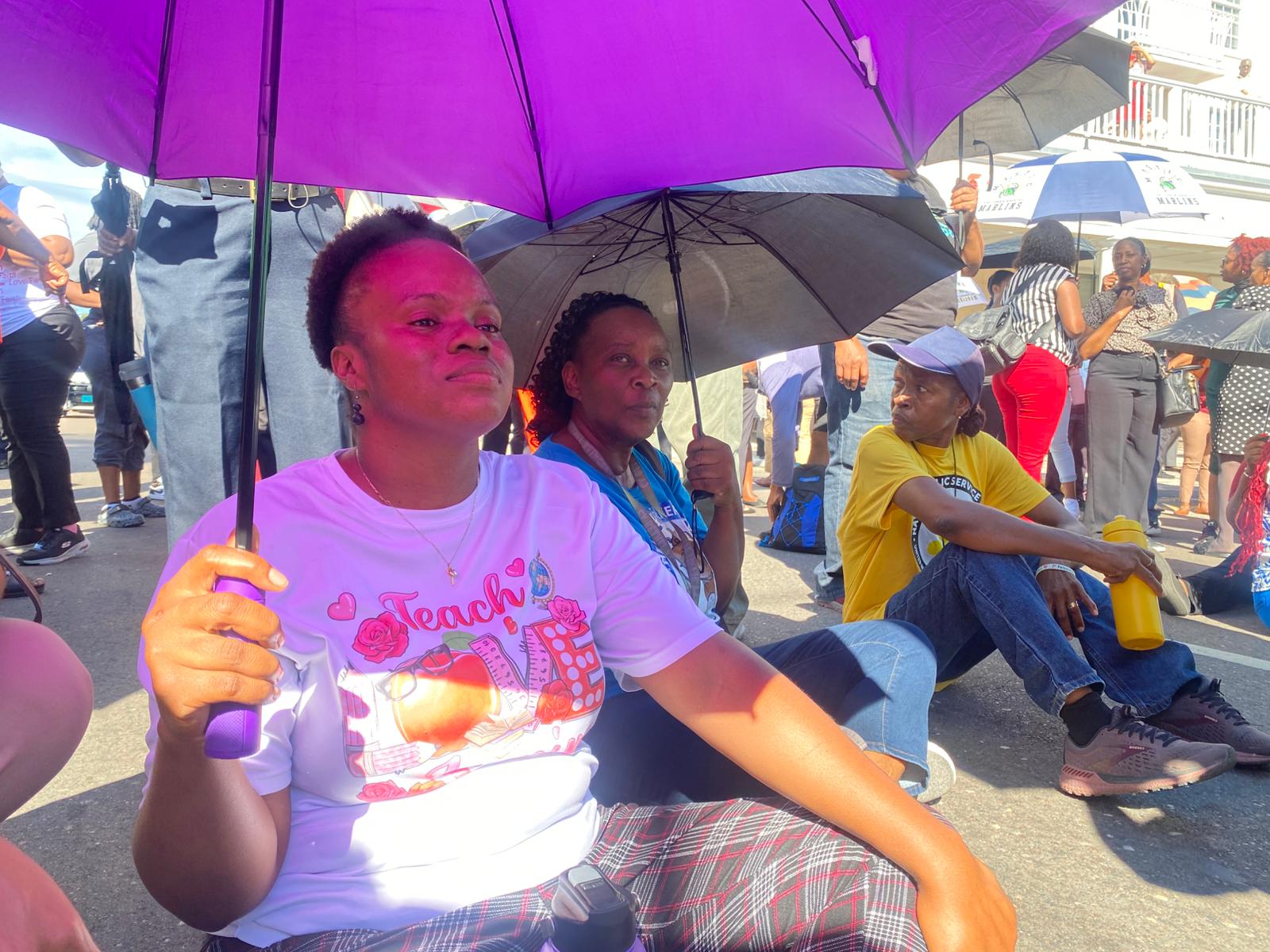
By Deandrea Hamilton | Magnetic Media
Monday, October 13, 2025 — Nassau, The Bahamas – What began as a calm holiday meeting has spiraled into a full-blown standoff between The Bahamas Government and two of the country’s most powerful public sector unions — the Bahamas Union of Teachers (BUT) and the Bahamas Public Services Union (BPSU) — after the Prime Minister abruptly cancelled follow-up talks set for Tuesday, blaming public comments made by union leaders.
The announcement of the cancelled meeting came late Monday, just hours after a tense sit-down at the Office of the Prime Minister, held on National Heroes Day, where both BUT President Belinda Wilson and BPSU President Kimsley Ferguson accused the government of dragging its feet on salary increases and retroactive pay owed to thousands of public officers.
Wilson, never one to mince words, said the Prime Minister’s “technical officers” — the very people responsible for executing his instructions — were failing to carry out his directives regarding payment timelines.
“The Prime Minister’s issue,” Wilson said, “is that he has persons working for him who are not following his instructions. If those officers would follow through on what he told them to do, we wouldn’t be here today.”
Wilson added that the BUT and other unions are demanding retroactive pay dating back to September 2024, and that all increases be applied and paid by the October payday, not December as previously stated by the Prime Minister.
“Senior civil servants already received their retroactive pay — thousands of dollars — backdated to September of last year,” Wilson charged. “We’re saying the small man deserves the same. This isn’t a gift. It’s money already earned.”
Her comments came after the government publicly insisted that the salary adjustments would be implemented by December 2025, just ahead of Christmas — a timeline unions flatly reject as too slow.
Ferguson: ‘No More Excuses’
Following Wilson, BPSU President Kimsley Ferguson delivered a fiery statement of his own, telling reporters the unions would no longer tolerate delays or mixed messages from the Davis administration.
“The Prime Minister was receptive — but we’re not accepting excuses,” Ferguson said. “If the Prime Minister’s having a memory lapse, we have the Hansard from Parliament to remind him exactly what he promised public officers.”
Ferguson went further, warning that if Tuesday’s meeting failed to produce results, unions would “visit the House of Assembly” and intensify their campaign for immediate payment.
“Public servants, ready yourselves,” he declared. “We are prepared to stand together — all across The Bahamas — until our needs are met.”
Now, with the Prime Minister cancelling tomorrow’s talks altogether, that threat appears closer to becoming reality.
Government Bungles Response
Observers say the administration’s handling of the matter has been confused and contradictory, with conflicting statements on payment timelines and poor communication fueling frustration among teachers, nurses, and general public officers.
The government has maintained that the funds are allocated and will be disbursed before year’s end, but unionists insist they’ve heard it all before — and this time they want results, not promises.
The Prime Minister’s decision to cancel the meeting, rather than clarify or de-escalate tensions, has drawn sharp criticism across social media and among rank-and-file civil servants who see the move as punitive and dismissive.
Slowdown and the Threat of Another Mass Protest
Across several ministries, departments, and schools, reports are already surfacing of a go-slow in the public service, as workers express solidarity with the unions’ demands.
Many believe another mass demonstration is imminent, similar to the one staged last week Tuesday when thousands of workers gathered outside the House of Assembly on Bay Street as Parliament reopened after summer recess.
That protest brought parts of downtown Nassau to a standstill as union members sang, marched, and even sat in the street — a powerful show of defiance that now threatens to repeat itself unless the government moves quickly to resolve the impasse.
A Political Flashpoint
What began as a straightforward salary dispute has now evolved into a test of credibility and competence for the Davis administration. With a restless public sector, rising inflation, and unions unified across professions, the government risks not only another protest — but a full-blown industrial crisis heading into the year’s end.
For now, the unions are standing firm: they want retroactive pay from September 2024 and full salary adjustments by this October. Anything less, they warn, could push the country’s workforce from a slowdown into open confrontation.
Angle by Deandrea Hamilton. Built with ChatGPT (AI). Magnetic Media — CAPTURING LIFE.
Bahamas News
Nassau Cruise Port Marks Sixth Anniversary with Exciting New Additions for Visitors and The community
Published
2 months agoon
October 8, 2025
[Nassau, Bahamas, October 8, 2025] Nassau Cruise Port (NCP) proudly celebrates its sixth corporate anniversary by unveiling a series of transformative additions that further enhance the guest and community experience. The anniversary comes at a pivotal moment in the growth of the port, with the opening of a new swimming pool, an expanded marina, and a state-of-the-art ferry terminal that will support transfers to the Royal Beach Club, which is currently under construction on Paradise Island.
Since its $300 million redevelopment, Nassau Cruise Port – the largest transit cruise port in the world – has welcomed millions of visitors and become one of the most vibrant cruise destinations in the world. This anniversary not only reflects its commitment to delivering world-class facilities, but also its dedication to creating meaningful connections between visitors and the Bahamian community.
“This milestone represents much more than the passage of time,” said Mike Maura, Jr., CEO and Director of Nassau Cruise Port. “It reflects our promise to continually elevate the guest experience, contribute to the local economy, and provide opportunities for Bahamians. During our first year (2019) of operating the Nassau Cruise Port, Nassau welcomed approximately. 3.85 million cruise guests, and 2025 will see well over 6 million cruise visitors visit Nassau. Our focus on driving cruise tourism and the $350 million investment in our downtown waterfront is a testament to our vision of making Nassau a premier cruise and leisure destination.”
The new pool offers a refreshing retreat for visitors enjoying Nassau’s waterfront, while the expanded marina will accommodate additional yachts, boosting tourism and local commerce. The ferry terminal expansion enhances passenger flow and supports convenient, seamless transfers to the Royal Beach Club, strengthening Nassau’s position as a hub for Caribbean cruising and leisure.
As part of its anniversary celebrations, NCP will host a series of internal and external activities to celebrate its team and to highlight its ongoing investments in the Bahamian economy, including job creation, local vendor opportunities, and cultural showcases at the port.





